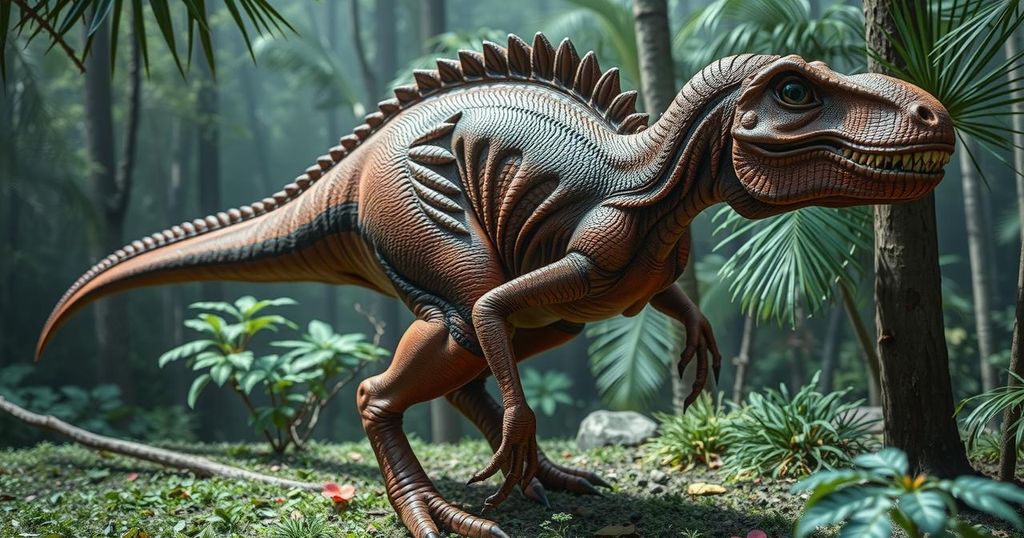Urgent Conservation Needed: Helmeted Water Toad Faces Extinction Threat

The Helmeted Water Toad in Chile is now vulnerable due to human-caused habitat loss and climate change, reflecting the broader amphibian crisis, which sees one-third of species at risk. Simultaneously, a debate sparks around biotechnological efforts to revive extinct species, raising questions about conservation priorities and the impacts on ecosystems.
The plight of the Helmeted Water Toad (Calyptocephalella gayi), a prehistoric species found in Chile, reflects the alarming trend of extinction facing many amphibians due to human activities. This “living fossil” has witnessed a significant habitat decline attributed to climate change and encroachment, resulting in a 30% drop in population since 1990, consequently earning a classification of “vulnerable” according to the International Union for Conservation of Nature (IUCN). “It is heartbreaking that a species that outlived the dinosaurs now faces extinction at human hands,” stated Melissa Cancino, founder of Proyecto Anfibia, which highlights the broader endangered status of amphibians, with a concerning one-third of the 6,300 species facing potential extinction.
The IUCN notes that 28% of evaluated species are threatened, with habitat destruction impacting island species disproportionately. Examples such as the Ridgway’s Rail illustrate the consequences of habitat loss due to human encroachment and environmental changes, while wildfires exacerbate struggles for species like the Mountain Yellow-Legged Frog. Scientists predict that as many as one million species could face extinction in the near future, as current rates exceed historical averages, underscoring the urgent need for conservation efforts.
In contrast to traditional conservation efforts, the emergence of biotechnology endeavors to revive extinct species has ignited a debate within the scientific community. Companies like Colossal Biosciences are pursuing ambitious projects to bring back the woolly mammoth, the Tasmanian tiger, and others through advanced genetic engineering techniques. They argue that reintroducing these lost species could restore balance to ecosystems affected by the absence of apex predators, a view met with skepticism by some scientists who caution against the profound environmental shifts that have occurred since these species disappeared.
As discussions ensue over whether to focus financial resources on existing endangered species or invest in de-extinction initiatives, the broader conversation about biodiversity and human impact on the planet becomes increasingly critical.
The article highlights the current challenges faced by the Helmeted Water Toad, a species that has survived since the time of the dinosaurs but is now threatened by human activities such as habitat loss and climate change. It discusses the endangered status of amphibians as a group, providing context on the broader biodiversity crisis affecting numerous species globally. Moreover, the article contrasts traditional conservation approaches with innovative biological methods aimed at reviving extinct species, thereby generating a significant debate in conservation circles.
In summary, the case of the Helmeted Water Toad serves as a poignant reminder of the ongoing biodiversity crisis exacerbated by human impact. While conservationists advocate for urgent interventions to protect endangered species, innovative approaches like de-extinction illustrate the complexity of ecological restoration efforts. The future of our planet’s biodiversity hangs in the balance, necessitating a multifaceted approach to safeguard and possibly revive lost species whilst addressing the root causes of species decline and habitat loss.
Original Source: americanbazaaronline.com






